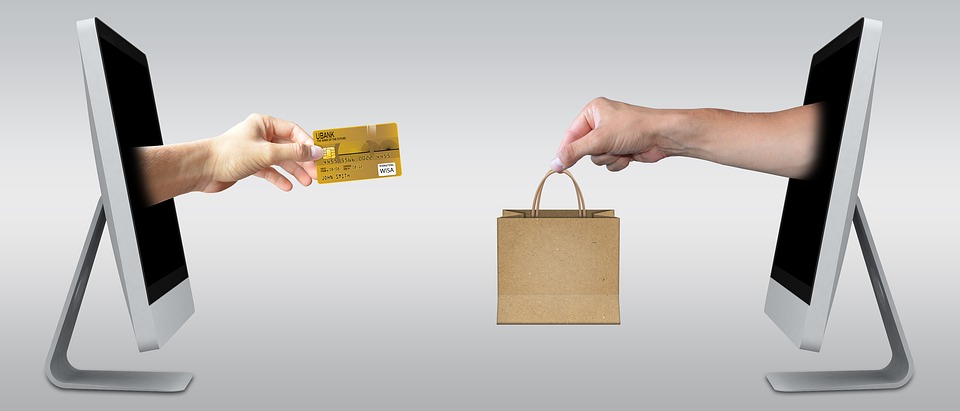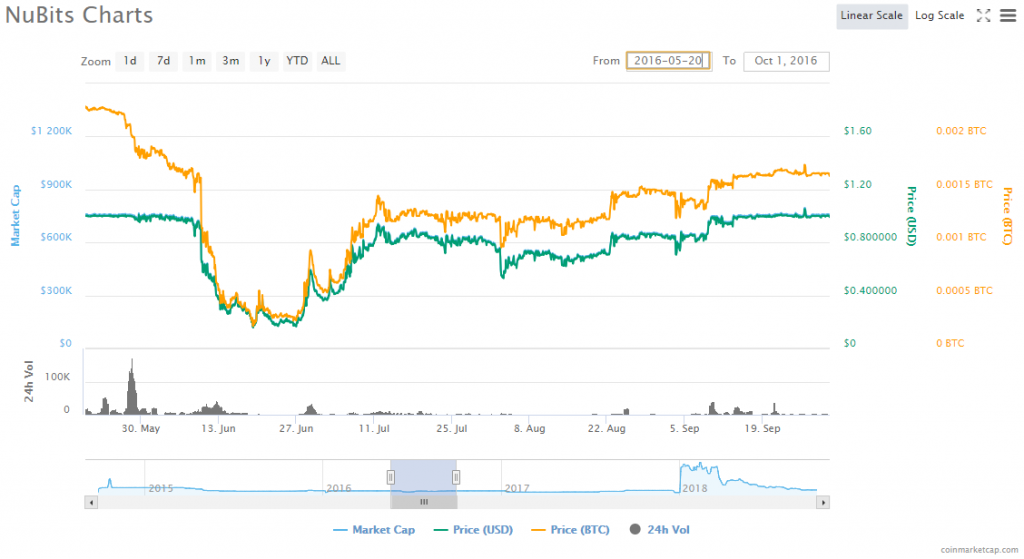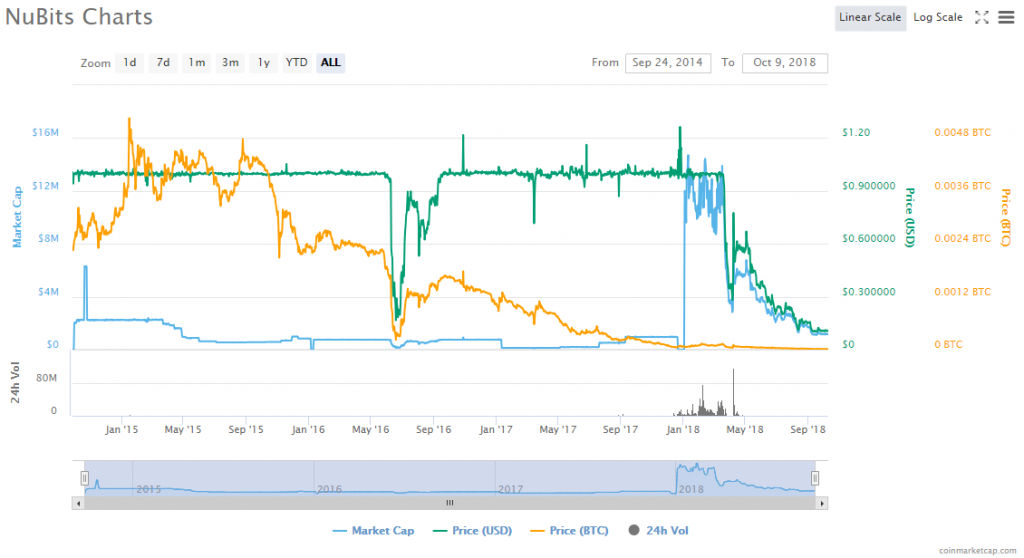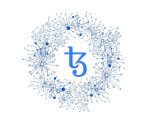Table of Contents
What is a stablecoin?
Quite simply, the aim of a stablecoin is to provide a stable currency. In order to retain value, the coin is pegged to another asset, that is it has a fixed exchange rate with a given underlying asset. Currencies can be pegged to gold or other precious metals, or another currency, usually US dollar, but there are actually quite a lot of contemporary examples. There are also some solutions which aim to keep the value of the coin stable by relying on another cryptocurrency. There are even algorithmic stablecoins that don’t rely on any underlying asset. Instead, they apply smart contracts that automatically manage (expand or contract) the supply of the coin. We will talk more in-depth about each type of a stablecoin in our next article.
| At eToro you can trade 49 currency pairs, including several cryptocurrencies. Join eToro |
Back to basics: what is money?
In order to understand the advantages of stablecoins and why they are needed we need to go back to the basic characteristics of money.
 What qualities does money need to have in order to be functional? Firstly, all parties involved in a transaction need to agree that the instrument you pay with (money) has value, which makes it a medium of exchange. This solves the issue of a barter system (exchanging one good for another, e.g. apples for oranges), which requires both people to need the exact goods that are being exchanged. For example, if you want to sell apples for oranges, you need to find not only someone who wants to get rid of oranges, but also someone who wants apples – such situation is not always a given.
What qualities does money need to have in order to be functional? Firstly, all parties involved in a transaction need to agree that the instrument you pay with (money) has value, which makes it a medium of exchange. This solves the issue of a barter system (exchanging one good for another, e.g. apples for oranges), which requires both people to need the exact goods that are being exchanged. For example, if you want to sell apples for oranges, you need to find not only someone who wants to get rid of oranges, but also someone who wants apples – such situation is not always a given.

Secondly, one should be able to use it to measure value, that is the money should be able to be used as a unit of account. This feature requires the instrument to have a stable value. Can you imagine, for example, comparing two items in a restaurant menu when the prices have changed three times before you could make a choice?

Thirdly, it should retain its value (purchasing power) over a longer period of time. That means that it has to be a reliable store of value. You want to be able to spend your money or exchange it in the future without the fear that your money changed in value.
There a few other characteristics of “ideal” money. The quality of being interchangeable, so-called fungibility. Every unit of money should be able to be exchanged for another unit (an ounce of gold is worth the same as another ounce of gold, $1 paper dollar is worth the same and is interchangeable with another $1 paper dollar bill). Money should also be divisible into smaller units, and easy to move (portability). Can you imagine carrying around a gold bullion and try to pay for a lollipop with it? Might be difficult just to carry it around, but payment would also cause some problems, as gold is commonly not acceptable as a form of payment. Each unit of money should be uniform, that has the same value (a $1 bill is always worth $1, there are no special $1 bills worth more this value). As paper money is slowly going away this might not be an issue much longer, but it should be mentioned that paper money is very easily destroyed, and therefore it is not durable. Finally, in order to maintain the value of money, its supply should be limited. Because, as anyone with 15-minute worth of economic knowledge will tell you, the more money you print, the less valuable each unit becomes (and inflation rises).
Cryptocurrency vs fiat money
Let’s take a look at cryptocurrencies in the context of these money features. Overall, cryptocurrencies do quite well as money. They can definitely be used as a medium of exchange, often with some advantages over traditional fiat money (e.g. lower or no fees). They also fulfil the characteristics of portability, uniformity, and durability. Fungibility is interesting, as it depends on the specific cryptocurrency. The more opaque (private) the coin is, the more fungible it is. For example, Monero could be considered fungible, but not Bitcoin (as you are able to trace Bitcoin transactions). Cryptocurrencies definitely win in the limited supply and divisibility category, as they can be divided up to 18 points after the decimal point, compared to fiat’s 2 points (down to $0.01, or whatever currency you use).

But they are still not widely accepted yet. Why? Because, and no minds will be blown by this statement, cryptocurrencies are very volatile. This means that they are difficult to be used as a unit of account, as the joke shows. Additionally, they can be tricky as a store of value, since the volatility works both ways. The price can “go to the moon”. Or quite the opposite, as the people who bought Bitcoin at the height of the 2017 hype can now tell you.
Advantages of stablecoins
In order for cryptocurrencies to be widely used, they have to be better that contemporary money. Which means that cryptos need to be at least as good as the money we have today, that is one that can be used as a medium of exchange, a unit of account, and store of value.
Stablecoins may become a catalyst for widespread cryptocurrency adoption. Why? As their value does not fluctuate (for the most part, but we’ll get to that), they are better suited as a store of value and a unit of account. This means that they can enjoy all the traditional advantages of cryptocurrencies, mentioned earlier, as well as solve the volatility issue currently present in the crypto market. Furthermore, depending on who you ask, stablecoins include several other advantages.
Traders can utilise stablecoins to protect against market corrections (price-drops of at least 10% after a temporary increase in price, e.g. due to the hype). In general, if the cryptos are in a bear market, if the prices are going down due to a market correction, or if you simply believe that an asset’s price will go down, you can exchange it for stablecoins. If the price of the asset does go down, your value will be locked in stablecoins. Let’s take an example. Let’s say you exchange 1 BTC at the current price of $6.600 for stablecoins, and the price of Bitcoin goes down to $6.000, you still hold $6.600 worth of BTC, just in another coin.
But day traders are not the only ones who benefit from keeping the value of their trades. Investors can retain value against market volatility by holding stablecoins. The ability to keep the value of your money stable is especially useful if you live in a country in a dire economic situation, for example, one where inflation is out of control (Venezuela comes to mind, but it certainly is not the only country with inflationary problems). Stablecoins might also aid innocent citizens in countries suffering under sanctions, or simply those who don’t want to trust banks or other centralised (and possibly corrupted) institutions.
Retail adoption of cryptocurrencies can still be considered small. But the stability of these coins may be attractive to both retailers and consumers, as it solves the unit of account issue mentioned earlier. And if retailers decide to add some stablecoins to the cryptocurrencies they accept, day-to-day purchases with cryptos may rise significantly.
Individuals often want to deal in dollars (or other major fiat currencies), as during times of high volatility the actual price at which a trade is executed may be higher than expected (so-called slippage). However, regulatory issues can make it difficult for crypto exchanges to allow fiat currencies. Stablecoins neatly solve this issue. Additionally, people exchanging their funds for fiat-equivalents (or as close as stablecoins can get to it) leads to higher liquidity on exchanges, something that these platforms surely appreciate.
More like unstablecoins…
So far, everything sounds great. There is certainly a demand for stablecoins, and their potential can be clearly seen. So what’s the issue? Quite simply, saying that a coin will cost $1 is simply not how financial markets work.
Instability is, ironically, one of the biggest issues of stablecoins. Under normal market conditions, the value of any item, be it an asset, commodity, or a token is determined by supply and demand. And every previous and current pegged asset has struggled with this very problem.
One of the most dramatic histories belongs to NuBits.

Launched in 2014, the stablecoins managed to remain stable for a few years before crashing in May 2016. The price dropped down to $0.15 in June, was recovering over the summer, and eventually returned to stability in September.
| At eToro you can trade 49 currency pairs, including several cryptocurrencies. Join eToro |
On the overall price chart of NuBits, several price jumps and falls can be seen.

In October 2016, the price jumped to $1.22, in March 2017, dropped to $0.72. And in September and December 2017, the price reached $1.52 and $1.49 respectively. In March 2018, NuBits’ peg crashed again. The team did not have enough in reserve to withstand a drop in demand. A reserve, by the way, which was held in Bitcoin. So when the value of Bitcoin went down, so did the value of NuBits reserves. And although in April the price saw some recovery, the price suffered a death spiral soon after (due to panic, selling off, and insufficient reserves).
NuBits is by far not the only stablecoin with price volatility issues. Every stablecoin on the market has experienced price jumps, which only speaks to the fact that stability is more of a goal of stablecoins, rather than an inherent characteristic.
| At eToro you can trade 49 currency pairs, including several cryptocurrencies. Join eToro |
Other issues
Centralisation
Within the stablecoin environment, fiat-collateralized ones (pegging a stablecoin to a fiat currency such as USD) are especially vulnerable to centralisation, as the reserves of the coin are usually held with a centralised entity that has to ensure that the token is redeemable for fiat money. The stablecoin Tether, backed by USD, is considered heavily centralised due to its close ties to the Bitfinex exchange – during the Paradise papers data leak in November 2017 it was revealed that Bitfinex leadership, Potter and Devasini, set up the company Tether Limited in 2014 (but kept quiet about this close relationship). Despite the centralisation and other criticisms, including not being able to conclusively prove that they have enough reserves to back USDT (Tether’s token), Tether is currently the most popular stablecoin.
Vulnerability to a black swan event
A black swan event is a random, unexpected crash. Crypto-collateralized stablecoins are especially at risk here, as they have to deal not only with the volatility of their own coin but also the volatility of the underlying cryptocurrency. Additionally, as these coins may require overcollateralization, the loss would be even worse in case of a crash. It should also be mentioned that while fiat-currencies are more stable than cryptocurrencies, they cannot be considered crash-proof (e.g. the 2001 dot-com bubble, the 2008 crash, etc.).
Scaling
Scaling is especially tricky for reserve-backed stablecoins, as it is difficult to scale while achieving a 1:1 reserve at all times. In order to achieve enough liquidity, significant investment has to be poured into the project.
Regulatory challenges
The whole cryptocurrency market faces regulatory issues. But with stablecoins, the situations may be even more precarious. They are more closely related to actual (fiat) money, and therefore regulators may have an easier time cracking down on them. The recently released Gemini stablecoin aims to be the first regulated stablecoin.
Conclusion
Stablecoins have the potential to solve some of the contemporary problems of cryptocurrencies, namely volatility (and therefore, also a unit of account issues). They can protect traders from market corrections, and investors from the volatility of other cryptos. They also provide more liquidity on exchanges. In the future, the stability of these coins can result in a higher volume of day-to-day purchases with cryptocurrencies.
Currently, stablecoins still face a number of challenges. None of them can be described as perfectly stable. As mentioned earlier, stability is more of a goal rather than an inherent feature. Other challenges include a possible centralisation, threat of a black swan event, scaling, and possibly regulatory issues.
In our next article, different types of stablecoins are described (fiat-collateralized, crypto-collateralized, and uncollateralized), and several examples of active stablecoins are presented. You can access the article here.












